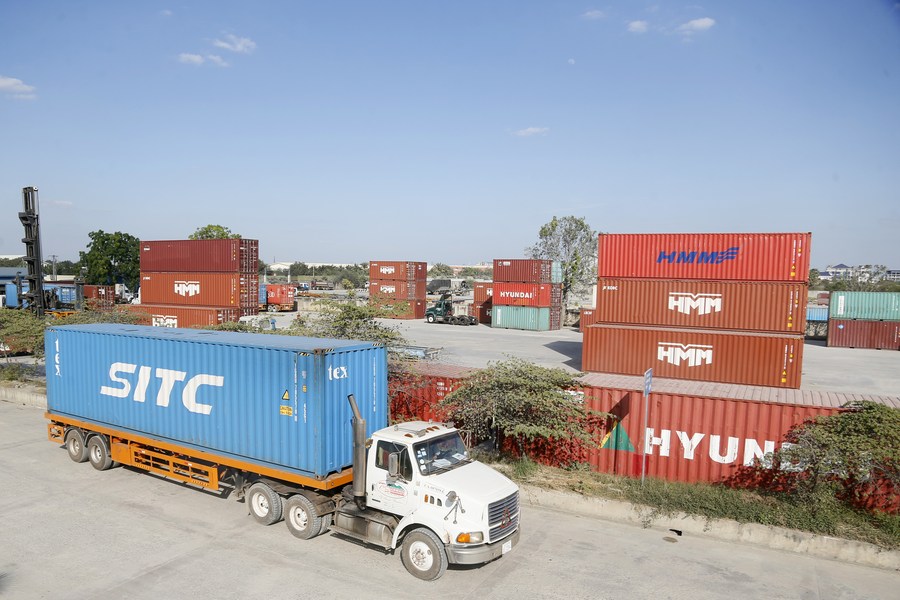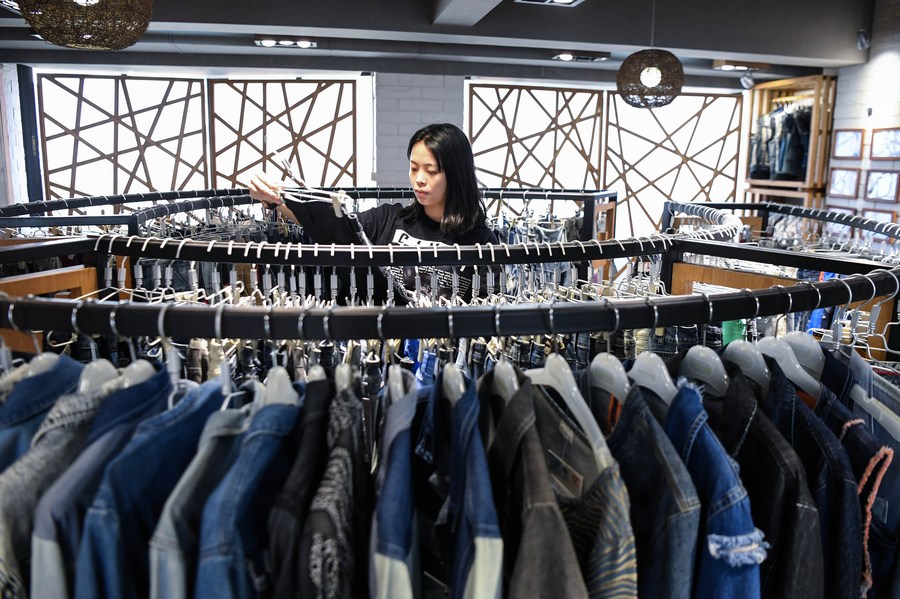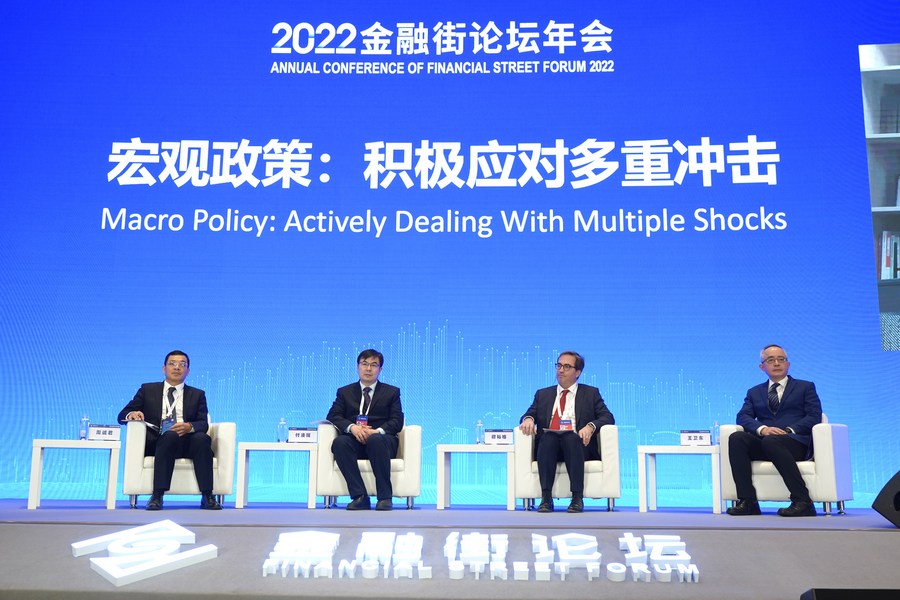China Resilience: China forges ahead high-standard opening-up with RCEP in high-quality implementation

A lorry drives out of the Hong Leng Huor Dry Port on the western suburb of Phnom Penh, Cambodia on Jan. 13, 2022.(Photo by Phearum/Xinhua)
The Regional Comprehensive Economic Partnership (RCEP) which came into force on Jan. 1, 2022 has been advancing efficient connectivity, delivering tangible dividends and upgrading economic and trade investment.
Growing trade in the region has given a boost to Chinese foreign trade enterprises while pushing forward closer regional cooperation in terms of production and manufacturing. Meanwhile, the trade deal also facilitated financial infrastructure connectivity among member economies.
While globalization is coming under stress, China moves firmly towards higher-level opening-up, deepening economic and trade exchanges, improving investment and cooperation quality as well as reshaping regional and global value chain, to build more platforms and explored more areas for high-quality development of foreign trade, according to Zhuang Rui, a professor at the University of International Business and Economics.
-- Catalyst for regional trade
The RCEP trade deal comprises 15 Asia-Pacific countries including 10 ASEAN members, Brunei, Cambodia, Indonesia, Laos, Malaysia, Myanmar, the Philippines, Singapore, Thailand and Vietnam, and their five trading partners, namely China, Japan, South Korea, Australia and New Zealand. The landmark RCEP is the world's largest free trade deal to date. The RCEP members account for roughly 30 percent of the world's gross domestic product and population.

A worker shows the pulp of a durian in Bangkok, Thailand on June 1, 2022. Local durian farmers welcome a bumper harvest in Thailand. (Xinhua/Rachen Sageamsak)
Official data showed that trade between China and the other 14 RCEP members reached 8.32 trillion yuan (about 1.20 trillion dollars) in the first eight months of 2022, accounting for 30.5 percent of China's total foreign trade in the period. In the first 11 months of this year, China's imports and exports with 14 other RCEP members amounted to 11.79 trillion yuan, up 7.9 percent year on year.
The entry-into-force of RCEP played an important role in terms of stabilizing trade in the region amid global economic uncertainties and complex situations, which evidences the importance of the mechanization and standardization of cooperation facing volatile external environment, Luo Yuze, deputy head of the Development Research Center of the State Council, told International Business Daily.
From a more micro-perspective, the dividends delivered by the RCEP has benefited China's foreign trade enterprises and other sectors as well.
East China's Jiangsu province, for example, had seen exports with RCEP certificates of origin reached 41.998 billion yuan in the first ten months of this year, while imported 10.57 billion yuan worth of certificated goods that enjoyed 186 million yuan of tariff reductions during the same period.
Exports and imports of goods between south China's Hainan Province with RCEP members reached 65.14 billion yuan from January to November of 2022, up 25.2 percent year on year. It is also noted that Hainan has attracted 70 million U.S. dollars of investment from RCEP members and established 141 new foreign-funded enterprises in the first three quarters.
Dalian city of northeast China's Liaoning Province saw imports and exports under RCEP deal total 7.1 billion yuan in the first three quarters. Dalian Customs and China Council for the Promotion of International Trade, Dalian Sub-council have together issued 22,000 RCEP certificates of origin during the period, with the worth of imports that enjoyed tariff reduction rising from 1 million U.S. dollars at the beginning to 14 million U.S. dollars.
-- High-quality RCEP implementation with local efforts
Besides seizing RCEP opportunities, local governments are actively advancing higher-quality opening-up featuring better business environment.
The RCEP Dalian international business zone was recently put into use, becoming China's first one-stop service platform that integrates RCEP members presentation, professional consultation, exchanges and interaction, market exploration, trade facilitation as well as legal services.
Started construction this May, the international business zone is designed to attract foreign investment enterprises and domestic business and trade entities to settle in. It also has particular focus on cultivating auto industry chain by inviting in auto related R&D, finance and design firms while facilitating auto imports and exports.

A staff member sorts clothes to be displayed online for the 132nd session of the China Import and Export Fair, also known as the Canton Fair, at Guangdong Textiles Import & Export Co., Ltd. in Guangzhou, south China's Guangdong Province, Oct. 14, 2022.(Xinhua/Deng Hua)
It is noted that the business zone has facilitated the signing of a batch of RCEP projects involving companies such as Mitsubishi Electric, LS Electric, Prime Planet Energy Dalian, CMB Financial Leasing, and Douyin as well as digital upgrading and Australian meat import deals.
Another example, southwest China's Yunnan Province that has long kept close trade and exchanges with RCEP members due to its location advantages, is also working towards more and better. On the occasion of the First International Cooperation Forum on RCEP Trade and Investment (Yunnan) held on November 19, Yang Dongwei, Vice Mayor of Kunming city vowed seven actions to deepen RCEP Cooperation and raise imports and exports to exceed 300 billion yuan by 2024 with service trade growing 30 percent annually. Kunming is building itself into a regional international center for South and Southeast Asia, Yang said.
-- High-standard opening-up with financial liberalization
Besides trade of goods, the financial sector is also accelerating high-quality opening-up for RCEP cross-border service and cooperation with some of the achievements introduced at a parallel forum during the Annual Conference of Financial Street Forum 2022 late November.

This photo taken on Nov. 21, 2022 shows the scene of a session themed "Macro Policy: Actively Dealing With Multiple Shocks" during the Annual Conference of Financial Street Forum 2022 in Beijing, capital of China. (Xinhua/Cai Yang)
The Bank of China (BOC) has completed more than 400 billion cross-border RMB settlement in RCEP countries and regions in the first three quarters of 2022, providing more than 250 billion U.S. dollars of settlement for trade of goods by RCEP members, according to BOC president Liu Jin.
Agricultural Bank of China (ABC) also rolled out its scheme on providing high-quality RCEP related services. The cross-border RMB settlement for trade and direct investment carried out by ABC approached some 800 billion yuan during the first three quarters, up 15 percent year on year, according to ABC vice president Zhang Xuguang, noting that the settlement for RCEP deals, in particular, rose by 27 percent on year.
ABC will continue to provide comprehensive financial services such as local and foreign currency account management, international settlement, cash management, Foreign Letter of Guarantee, trade financing and cross-border lending to RCEP enterprises, Zhang introduced, adding that the ABC will also further explore digital cross-border financial services as well based on RCEP paperless trading rules.
China Construction Bank (CCB), in the meantime, is actively docking China International Trade Single Portal and pushing forward single-window connectivity, clearing facilitation while providing online and one-stop trade settlement and financing services. CCB has applied block chain technology to further simplify payment and improve transaction efficiency, according to CCB vice president Cui Yong, noting that CCB's payment tool has now covered all currencies in RCEP region.
The Export-Import Bank of China, the country's policy bank responsible for facilitating the country's foreign trade, has rolled out specific credit support for imports from RCEP members in early November. A specific credit quota worth 200 billion yuan (about 27.7 billion U.S. dollars) has been set up to cater for the financing demands of related importers. It is noted that in the first ten months of 2022, the policy bank has offered over 310 billion yuan in total credit to support imports.
The financial cooperation between China and other RCEP members under relevant RCEP rules is important for preventing financial risks and stabilizing financial market. The high-standard opening-up policy and arrangement show commitment of Chinese government and are beneficial to utilize and allocate financial resources in the Asia-Pacific region more effectively and efficiently, according to Wang Wen, chief economist with China Export & Credit Insurance Corporation.


